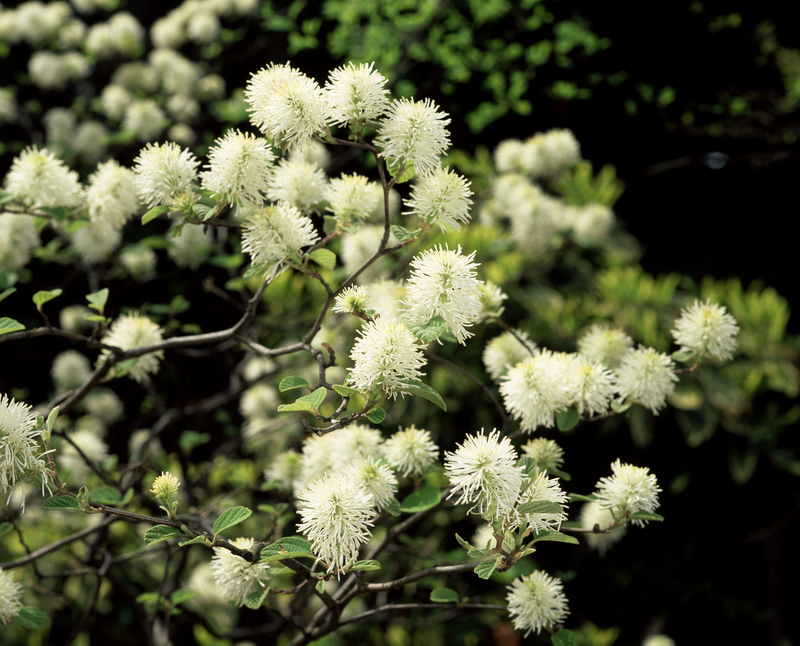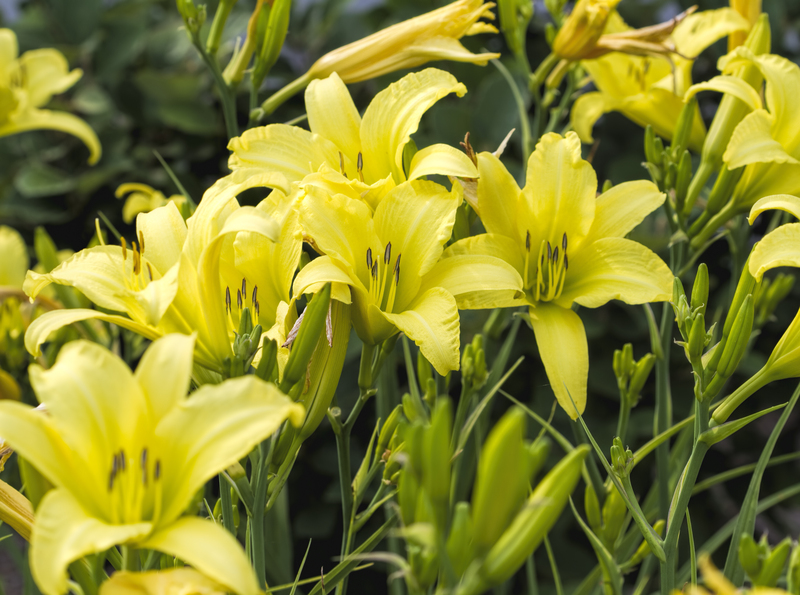Essential Strategies to Guard Your Garden in Winter
Posted on 27/05/2025
Essential Strategies to Guard Your Garden in Winter
As the leaves fall and temperatures plummet, a beautiful garden can quickly become vulnerable to a host of winter challenges. Whether you have a sprawling flower bed, a vegetable patch, or container plants on your patio, the colder months demand vigilant care and preparation. In this comprehensive guide, we'll explore a range of essential strategies to guard your garden in winter--ensuring your outdoor oasis survives the chill and emerges robust in spring.
Why Winter Protection for Gardens Is Crucial
Gardening doesn't stop when the weather turns cold. In fact, the steps you take now can mean the difference between thriving plants and a garden decimated by frost, snow, and ice. Winter garden protection shields your plants from:
- Freezing temperatures that damage roots and foliage
- Heavy snowfall putting stress on branches and stems
- Dehydration due to dry winter winds
- Animal pests searching for food and shelter

Preparing Your Garden for Winter
The foundation of winter garden defense begins with preparation. Taking the right steps before the first frost will ensure your plants are fortified.
1. Clean Up and Remove Debris
A tidy garden is less inviting to pests and diseases. Cutting back dead foliage, removing spent annuals, and raking away leaves prevents mold, fungi, and overwintering insects.
- Prune perennials to a few inches above the ground.
- Remove any diseased plants--do not compost them.
- Gather and compost healthy plant debris to improve soil for spring.
2. Mulching: Your Garden's Winter Blanket
Mulching is arguably the most effective strategy to guard your garden in winter. It provides insulation, moderates soil temperature, and conserves moisture.
- Apply 2-4 inches of organic mulch (such as straw, shredded leaves, or wood chips) around perennials, shrubs, and trees.
- Insulate root zones but keep mulch a few inches away from stems to avoid rot.
- Containers and raised beds benefit greatly from an extra mulch layer.
Protecting Plants from Frost and Freeze
3. Cover Vulnerable Plants
When a freeze is forecasted, using barriers can make all the difference.
- Frost cloths, garden fleece, or burlap can be used to cover delicate shrubs, flowers, and vegetables overnight.
- For small plants, inverted buckets or old pots provide emergency protection.
- Remove covers during the day to allow soil and plants to breathe and benefit from the sun's warmth.
4. Water Before the Freeze
It may sound counterintuitive, but watering your garden before a freeze can help.
- Moist soil retains more heat than dry soil, protecting roots from freezing.
- Water early in the day to give plants time to absorb moisture.
- Avoid overwatering, especially in poorly draining soil.
Shielding Evergreen and Delicate Plants
5. Windbreaks for Protection
Evergreens and certain delicate shrubs can suffer windburn from harsh winter gusts.
- Create temporary windbreaks from burlap screens or garden fabric set up on the windward side.
- Plant living windbreaks such as hedges, tall grasses, or trellised vines for long-term protection.
- Wrap small shrubs loosely with burlap to shield foliage.
6. Anti-Desiccant Sprays
Apply anti-desiccant sprays to the foliage of broadleaf evergreens or newly planted trees. These sprays create a thin, protective film that reduces moisture loss during dry winter months.
Preventing Animal Damage in Winter
Hungry animals like rabbits, deer, and rodents pose a significant threat during winter when natural food is scarce.
7. Physical Barriers and Fencing
- Install hardware cloth or metal mesh around the base of young trees and shrubs to prevent girdling and nibbling.
- Use welded wire or plastic mesh fencing to keep deer at bay; ensure it is tall enough (at least 6-8 feet).
- Wrap trunks of young trees with tree guards for added protection from mice and voles.
8. Natural Repellents
Apply natural repellents--such as garlic-based sprays, blood meal, or commercial deterrents--regularly throughout winter, especially after precipitation. Repellents can be a valuable complement to physical barriers for guarding your winter garden.
Winter Care for Container Gardens
Container plants face unique challenges in winter, as potting soil freezes faster than ground soil.
9. Move Containers to Shelter
- Group containers in a protected area against a south- or west-facing wall for warmth.
- Move sensitive plants into an unheated garage, shed, or greenhouse if possible.
- Wrap pots with bubble wrap, burlap, or old blankets to prevent cracking and insulate roots.
10. Adjust Watering Routines
Reduce watering frequency, but don't let soil dry out completely. Tip: Water when the temperature is above freezing and allow excess water to drain.
Protecting Your Garden Structures in Winter
Winter garden protection isn't just about plants--structures and tools need attention too.
- Clean and store garden tools indoors to prevent rust.
- Empty and store hoses to avoid freezing and cracking.
- Secure greenhouses, sheds, or cold frames against strong winds and snow loads.
- Check trellises, stakes, and supports to ensure they won't collapse under heavy snow.
Winter Maintenance: Ongoing Strategies for Garden Success
Effective winter garden strategies go beyond autumn preparation. Check on your garden regularly throughout the winter:
- Knock heavy snow off of branches gently to prevent breakage.
- Inspect tree and shrub coverings after storms.
- Look for signs of animal activity or disease and address promptly.
- Monitor soil moisture and water as needed during dry spells.
Special Considerations for Different Garden Types
Vegetable Gardens
For those with winter vegetable gardens, consider:
- Using cold frames or hoop houses to extend the harvest of hardy greens like spinach and kale.
- Mulch heavily to insulate root crops like carrots and parsnips for winter harvesting.
- Rotate crops and clean up debris thoroughly to reduce pest populations.
Flower Beds
Perennials often benefit from letting some stems and seed heads remain for winter interest and wildlife support, while tender bulbs may need to be lifted and stored indoors.
Fruit Trees
Paint trunks of young fruit trees with white latex paint to prevent sunscald, and use hardware cloth to protect against rodents.
Planning Ahead: Setting Your Garden Up for Spring
The time and effort you invest in defending your garden during winter will reap rewards when the days lengthen. Some end-of-winter tips to prepare for an early, healthy growing season:
- Remove mulch gradually as temperatures warm to avoid creating habitat for pests.
- Prune fruit trees and shrubs while they are still dormant.
- Test and amend soil as needed for optimal spring planting.
- Inspect for damage and replace or repair supports, fences, and coverings.

Summary: Your Winter Gardening Checklist
Whether you're a seasoned horticulturist or an enthusiastic amateur, using these crucial strategies to guard your garden in winter will help your landscape survive and thrive. To recap, implement these steps for year-round garden protection:
- Clean up debris and plant diseases
- Apply a thick mulch layer
- Cover vulnerable plants before frost
- Water before hard freezes
- Shield plants from harsh winds
- Use anti-desiccant sprays on evergreens
- Install fencing against animal pests
- Protect containers and adjust watering
- Maintain tools and garden structures
- Monitor your garden throughout winter
Conclusion: Enjoy a Flourishing Garden, Year After Year
Following these essential winter garden protection strategies takes some upfront effort, but ensures your plants and landscape are primed for success. Don't let harsh weather undo your hard work--by preparing in fall and staying vigilant through winter, you're giving your garden the best chance to bloom beautifully when spring returns.
Bookmark this guide and revisit it each year as part of your annual gardening routine. With the right care, you can continue to enjoy vibrant flowers, bountiful harvests, and thriving shrubs in every season--no matter what winter brings.



